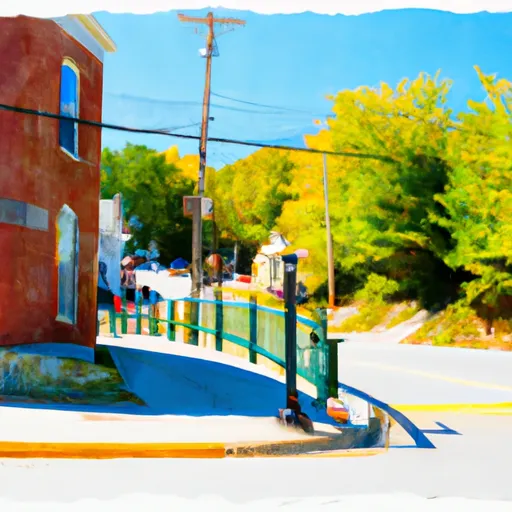-
 Snoflo Premium
Snoflo Premium
Get unlimited access to all our content
With no Ad interruptions! - Start Your Free Trial Login with existing account
Mill-River
Eden Index
Climate
7.9
•
Recreation
4.8
•
Community
1.2
•
Safeguard
5.1/10

Mill-River, Massachusetts is a charming town located in the New England region of the United States. Known for its picturesque landscapes and rich history, the town offers a variety of outdoor recreation opportunities.
In terms of climate, Mill-River experiences a typical New England weather pattern. Summers are warm and humid, with average temperatures ranging from the mid-70s to the low 80s Fahrenheit. Winters can be cold and snowy, with temperatures often dropping below freezing. Spring and autumn bring mild temperatures, making them ideal seasons for outdoor activities.
The town is blessed with abundant hydrology constituents, with the Mill River being the prominent water body. This river not only adds to the scenic beauty of the area but also provides opportunities for fishing and boating enthusiasts. Anglers can try their luck at catching trout, bass, and other freshwater species found in the river.
Outdoor recreation is a highlight of Mill-River, with numerous options available. The town boasts several hiking trails that wind through its picturesque landscapes, providing opportunities for nature lovers to explore the surrounding forests and appreciate the local flora and fauna. Additionally, the river offers a perfect spot for kayaking, canoeing, and paddleboarding. Nature enthusiasts can also enjoy camping and picnicking in the town's well-maintained parks.
In summary, Mill-River, Massachusetts offers a delightful blend of scenic beauty, a diverse range of hydrology constituents, and ample opportunities for outdoor recreation. Whether it's fishing by the river or exploring the hiking trails, visitors and residents alike can enjoy the natural splendor of this charming New England town.
What is the Eden Index?
The Snoflo Eden Index serves as a comprehensive rating system for regions, evaluating their desirability through a holistic assessment of climate health, outdoor recreation opportunities, and natural disaster risk, acknowledging the profound impact of these factors on livability and well-being.
Climate Health Indicator (CHI): 7.9
Mill-River receives approximately
1260mm of rain per year,
with humidity levels near 75%
and air temperatures averaging around
7°C.
Mill-River has a plant hardyness factor of
5, meaning
plants and agriculture in this region thrive during a short period during spring and early summer. Most
plants will die off during the colder winter months.
By considering the ideal temperature range, reliable water supplies, clean air, and stable seasonal rain or snowpacks, the Climate Health Indicator (CHI) underscores the significance of a healthy climate as the foundation for quality living.
A healthy climate is paramount for ensuring a high quality of life and livability in a region, fostering both physical well-being and environmental harmony. This can be characterized by ideal temperatures, reliable access to water supplies, clean air, and consistent seasonal rain or snowpacks.
Weather Forecast
Streamflow Conditions
Connecticut Coastal
Area Rivers
Connecticut Coastal
Snowpack Depths
Connecticut Coastal
Reservoir Storage Capacity
Connecticut Coastal
Groundwater Levels
Recreational Opportunity Index (ROI): 4.8
The Recreational Opportunity Index (ROI) recognizes the value of outdoor recreational options, such as parks, hiking trails, camping sites, and fishing spots, while acknowledging that climate plays a pivotal role in ensuring the comfort and consistency of these experiences.
Access to outdoor recreational opportunities, encompassing activities such as parks, hiking, camping, and fishing, is crucial for overall well-being, and the climate plays a pivotal role in enabling and enhancing these experiences, ensuring that individuals can engage in nature-based activities comfortably and consistently.
Camping Areas
| Campground | Campsites | Reservations | Toilets | Showers | Elevation |
|---|---|---|---|---|---|
| October Mountain State Forest | 47 | 1,021 ft | |||
| Tolland State Forest | 93 | 1,473 ft | |||
| Kettletown State Park | 65 | 137 ft | |||
| Black Rock State Park | 100 | 399 ft | |||
| Windmill Hill - White Memorial | 45 | 947 ft | |||
| Housatonic Meadows State Park | 100 | 456 ft | |||
| Beartown State Forest | 12 | 1,614 ft | |||
| Haws Memorial - American Legion State Forest | 30 | 534 ft | |||
| Lake Waramaug State Park | 75 | 719 ft | |||
| Point Folly - White Memorial | 45 | 914 ft |
Nearby Ski Areas
Catastrophe Safeguard Index (CSI):
The Catastrophe Safeguard Index (CSI) recognizes that natural disaster risk, encompassing floods, fires, hurricanes, and tornadoes, can drastically affect safety and the overall appeal of an area.
The level of natural disaster risk in a region significantly affects safety and the overall livability, with climate change amplifying these risks by potentially increasing the frequency and intensity of events like floods, fires, hurricanes, and tornadoes, thereby posing substantial challenges to community resilience and well-being.
Community Resilience Indicator (CRI): 1.2
The Community Resilience Indicator (CRI) recognizes that education, healthcare, and socioeconomics are crucial to the well-being of a region. The CRI acknowledges the profound impact of these elements on residents' overall quality of life. By evaluating educational resources, healthcare accessibility, and economic inclusivity, the index captures the essential aspects that contribute to a thriving community, fostering resident satisfaction, equity, and social cohesion.

